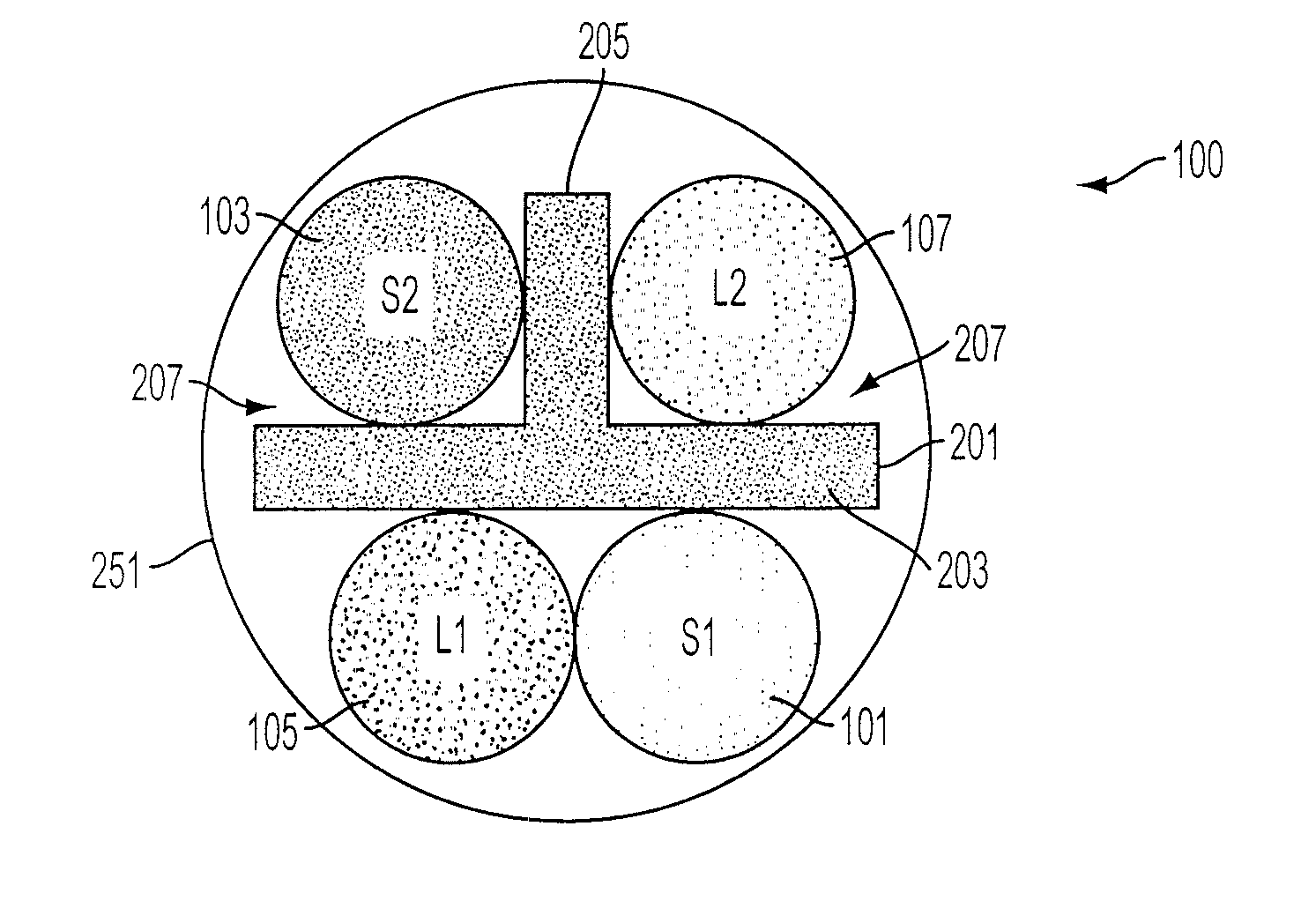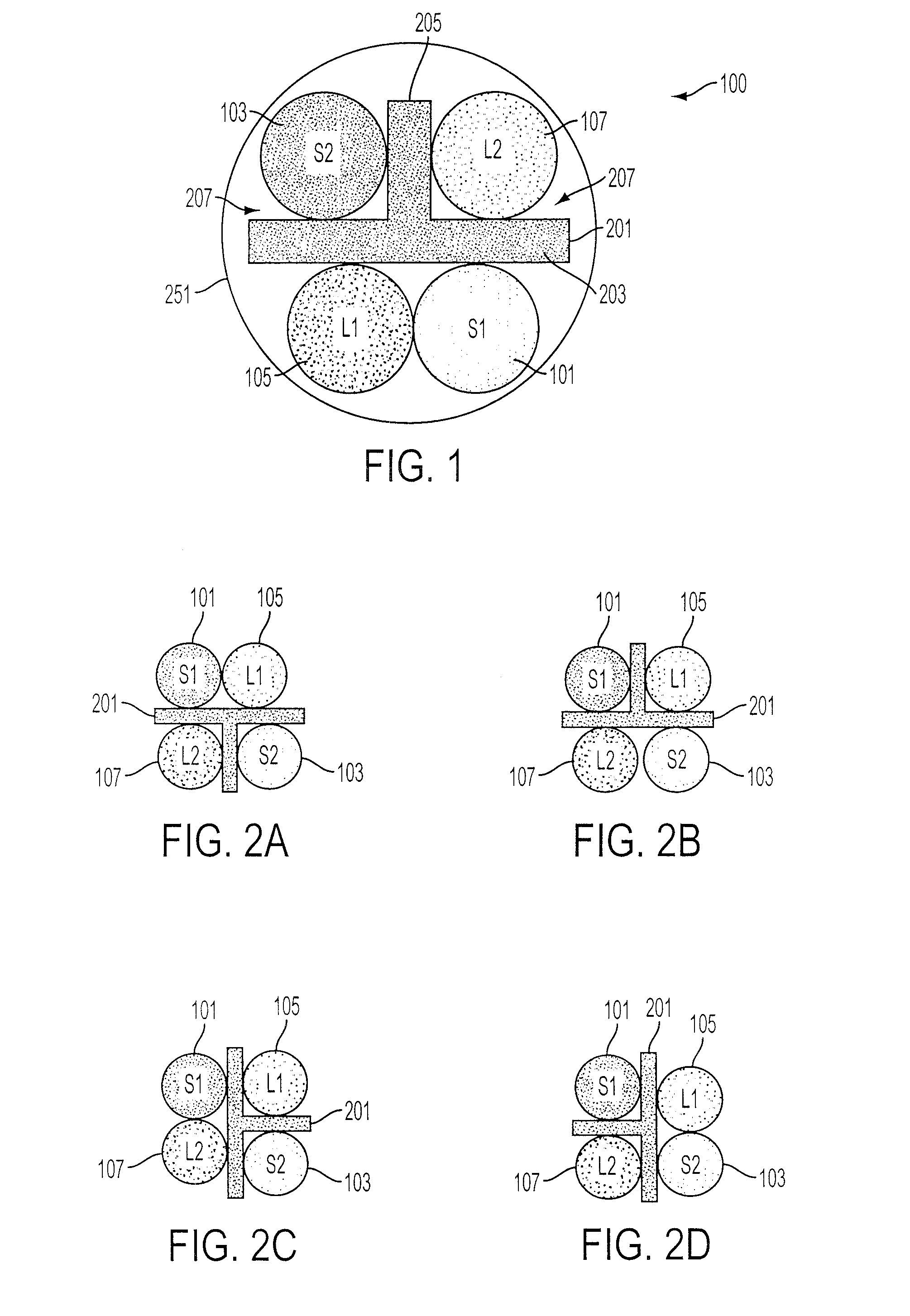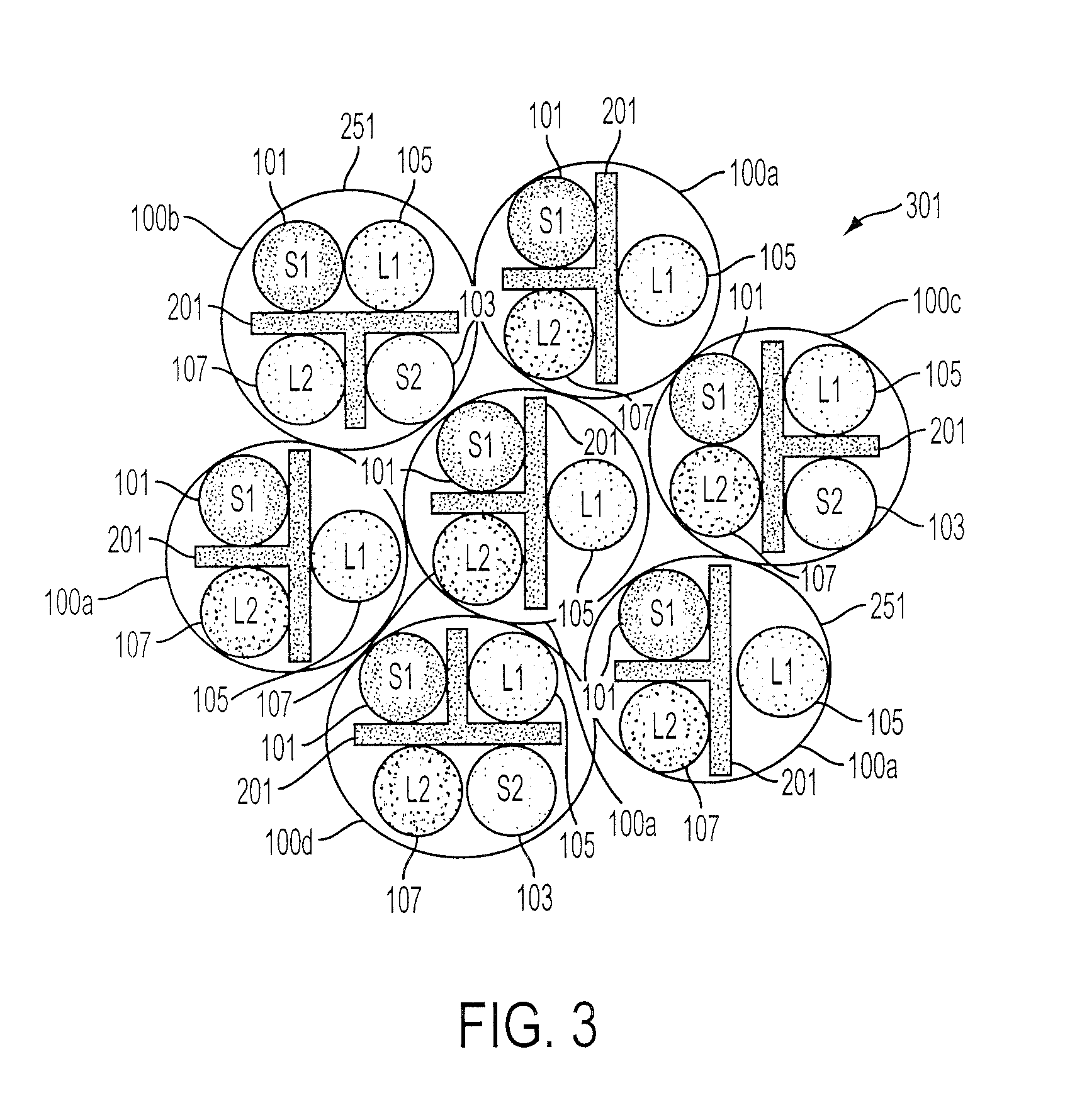Separator spline and cables using same
a technology of separater spline and cable, applied in the direction of cables with twisted pairs/quads, etc., can solve the problems of increasing network speed, increasing the workload of graphic and interactive web-based systems, and increasing the demands of network transfer speed, so as to achieve the effect of less material and easy construction and us
- Summary
- Abstract
- Description
- Claims
- Application Information
AI Technical Summary
Benefits of technology
Problems solved by technology
Method used
Image
Examples
Embodiment Construction
FIG. 1 shows a cross-sectional representative view of an embodiment of a cable (100) including a T-shaped spline (201). This view is taken along the plane of the latitudinal dimension of the cable showing a cross section across the longitudinal dimension which extends into and out of the sheet. The cable comprises four component cables (101), (103), (105), and (107). In this conceptual cross-section, these component cables (101), (103), (105), and (107) are indicated by circles to show the general area taken up by each cable as is conventional in illustrations in the industry. FIG. 4 provides for a perspective view of an embodiment of a cable showing a more realistic example of each twisted pairs' layout. These component cables (101), (103), (105), and (107) will generally comprise two individually insulated conductors, which are wrapped around each other in a generally helical construction to provide for a twisted-pair data cable.
The four component cables (101), (103), (105) and (1...
PUM
| Property | Measurement | Unit |
|---|---|---|
| lay length | aaaaa | aaaaa |
| degree angles | aaaaa | aaaaa |
| degree angles | aaaaa | aaaaa |
Abstract
Description
Claims
Application Information
 Login to View More
Login to View More - R&D
- Intellectual Property
- Life Sciences
- Materials
- Tech Scout
- Unparalleled Data Quality
- Higher Quality Content
- 60% Fewer Hallucinations
Browse by: Latest US Patents, China's latest patents, Technical Efficacy Thesaurus, Application Domain, Technology Topic, Popular Technical Reports.
© 2025 PatSnap. All rights reserved.Legal|Privacy policy|Modern Slavery Act Transparency Statement|Sitemap|About US| Contact US: help@patsnap.com



